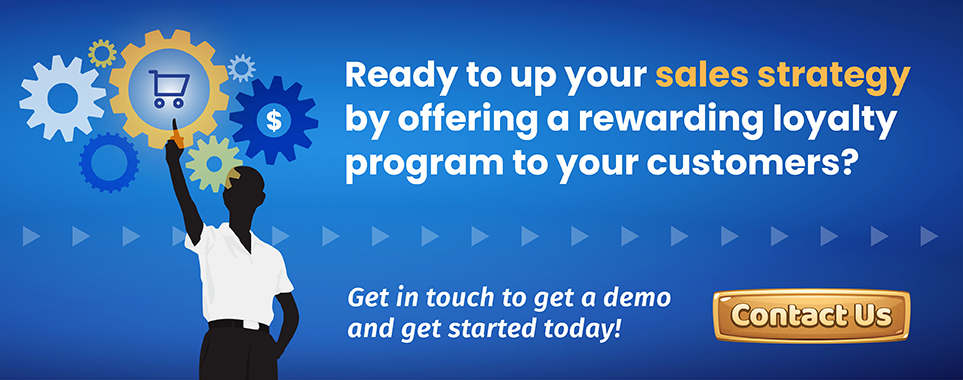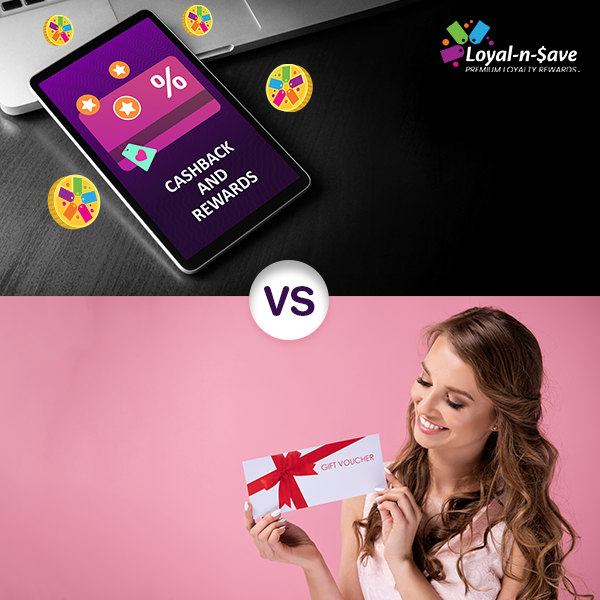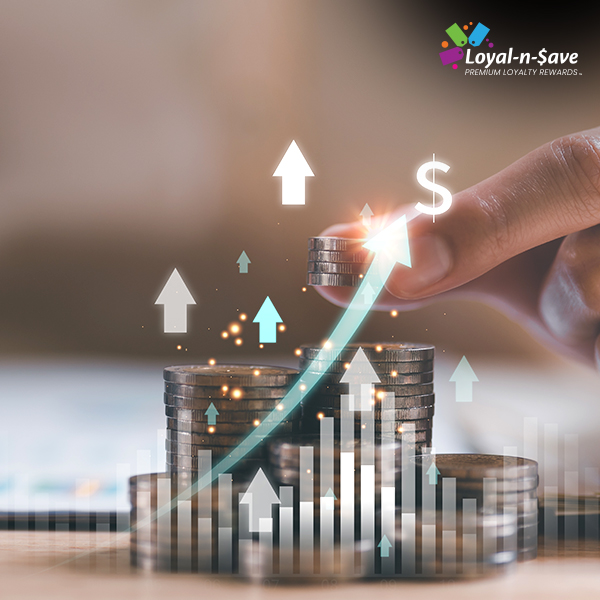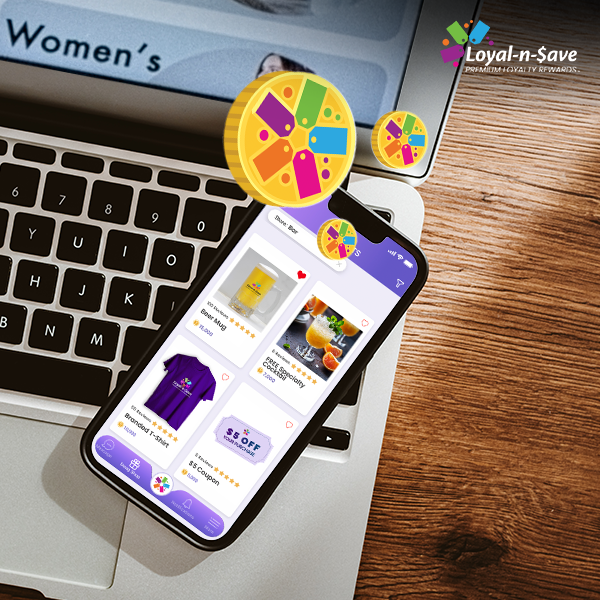Loyalty Programs: A Deep Dive into Traditional and Digital Approach
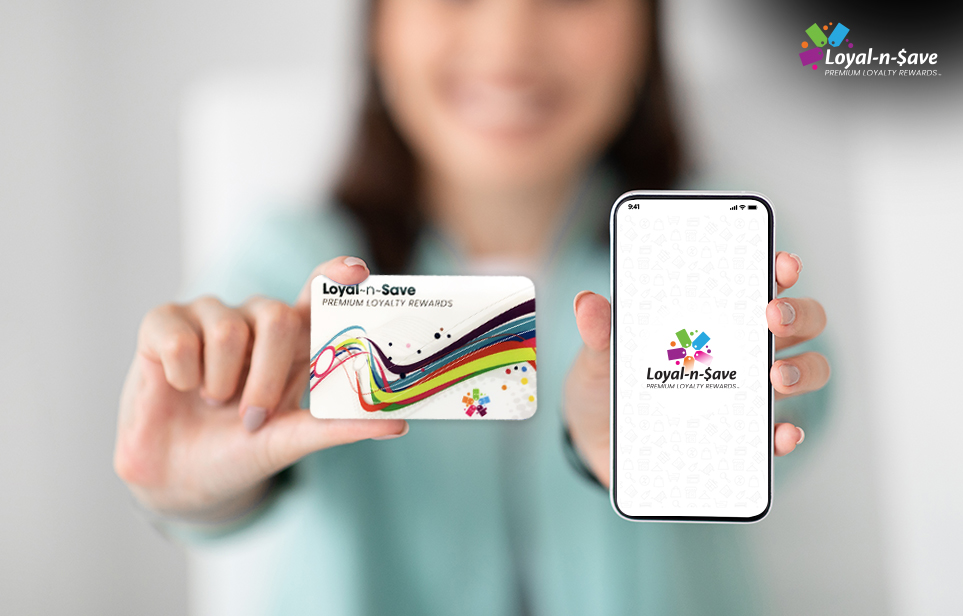
In the early 80s, American Airlines launched the first full-scale loyalty program called Frequent Flier program and has since evolved into AAdvantage program. This program has sown the seeds of revolution.
Though loyalty programs have been a part of business marketing since the late 18th century, they were not that effective.
Back in the days, copper tokens were used as loyalty cards, and they were replaced with stamps. This is considered the traditional loyalty programs, and now we live in a modern era where stamps have been replaced with digital loyalty cards and box-top coupons. They are called digital loyalty programs.
86% of customers are more loyal to businesses that offer rewards programs.
Significance of Customer Loyalty in Modern Business
Loyalty comes from a company’s dedication to meeting the needs of clients, building trust, and consistently providing valuable experiences. Today, it’s out of the question to envision a successful brand without having a strong community of loyal fans.
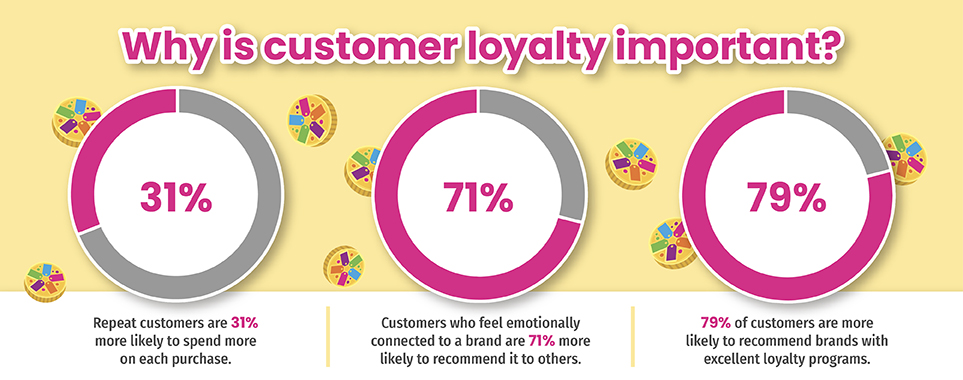
Keeping your customer happy can turn them into a loyal one, and it goes without saying that a loyal customer is a major revenue source for any brand. The above figures tell it like it is. The need for loyalty programs is undeniable.
What are Traditional Loyalty Programs?
Traditional loyalty programs rely on physical rewards, often in the form of punch cards, stamp cards, or points-based systems. Customers accumulate points or stamps with each purchase, eventually redeeming them for discounts, free products, or other perks.
Pros of Traditional Loyalty Programs
- Tangibility: Customers can physically see their progress toward rewards, making the program more tangible and motivating.
- Simplicity: The concept is straightforward and easy to understand for both businesses and customers.
- Nostalgia: For some customers, traditional loyalty programs evoke a sense of nostalgia and can be a nostalgic connection to a brand. For example, your consumer has an old school approach toward buying. A good loyalty program gives one-of-a-kind items and unique products as a reward if you use it regularly.
Tip
The Loyal-n-Save Swag Shop allows you to offer exclusive items to your customers for redemption. Learn more here >
Cons of Traditional Loyalty Programs
Traditional loyalty programs can be less efficient and less engaging compared to digital alternatives. They often lack personalization, making it difficult to tailor rewards to individual customer preferences. Additionally, tracking customer behavior and analyzing data can be challenging with traditional programs.
What are Digital Loyalty Programs?
Digital loyalty programs leverage technology to provide more flexible and personalized rewards. They typically involve mobile apps, digital cards, and QR code-based systems. Customers can earn points or rewards through online and in-store purchases, and they can track their progress and redeem rewards through a digital platform.
Pros of Digital Loyalty Programs
- Personalization: Digital programs allow businesses to collect and analyze customer data to offer personalized rewards and experiences.
- Convenience: Customers can easily access their loyalty program through their smartphones, eliminating the need for physical cards.
- Data-Driven Insights: Digital programs generate valuable data that can be used to improve marketing strategies and customer engagement.
- Seamless Experience: Digital loyalty programs can be integrated with other customer touchpoints, such as email marketing and social media, to create a seamless customer journey.
Cons of Digital Loyalty Programs
While digital loyalty programs offer numerous advantages, they can also present some challenges. For example, they may require a significant initial investment in technology and development.
Additionally, while few of the digital platforms don’t have the security element figured out properly, Loyal-n-Save offers a cost-effective solution with robust security measures to protect customer data.
Comparative Analysis: Traditional vs. Digital Loyalty Programs

10 Customer Loyalty Trends to Watch in 2025
As we approach 2025, the landscape of customer loyalty is undergoing significant transformation. Here are 10 key trends shaping the future of loyalty programs:
1. AI-Powered Hyper-Personalization
AI-driven personalization is revolutionizing customer experiences. By analyzing vast amounts of customer data, businesses can tailor offers, recommendations, and interactions to individual preferences. This level of personalization fosters stronger customer relationships and increases loyalty.
2. Emotional Loyalty
Building emotional connections is crucial for long-term loyalty. Businesses can achieve this by:
- Delivering Exceptional Customer Experiences: Consistently exceed customer expectations through seamless interactions and problem resolution.
- Authenticity: Be genuine and transparent in your brand messaging and actions.
- Shared Values: Align your brand with social and environmental causes that resonate with your target audience.
Emotionally engaged customers are 3Xs more likely to recommend your brand, repurchase, and stay loyal without shopping around. Turn your customers into brand advocates. Sign up for our loyalty program today and start building lasting relationships that matter!
3. Sustainable and Purpose-Driven Loyalty
Consumers, especially younger generations, are increasingly prioritizing sustainability. By incorporating eco-friendly practices and social responsibility into your loyalty programs, you can attract and retain conscious consumers.
4. Subscription-Based Loyalty
Subscription-based loyalty programs offer exclusive perks and benefits, such as early access, free shipping, and personalized experiences. This model can drive recurring revenue and foster deeper customer relationships.
5. Tiered Loyalty Programs
Tiered loyalty programs reward customers based on their spending and engagement. By offering exclusive benefits and personalized experiences to higher-tier members, businesses can motivate customers to spend more and stay loyal.
6. Gamified Loyalty Programs
Gamification can make loyalty programs more engaging and fun. By incorporating game-like elements such as points, badges, and challenges, businesses can encourage customer participation and loyalty.
7. Omnichannel Loyalty
A seamless omnichannel experience is essential for modern consumers. Loyalty programs should integrate seamlessly across all channels, including online, mobile, and in-store, to provide a consistent and convenient customer journey.
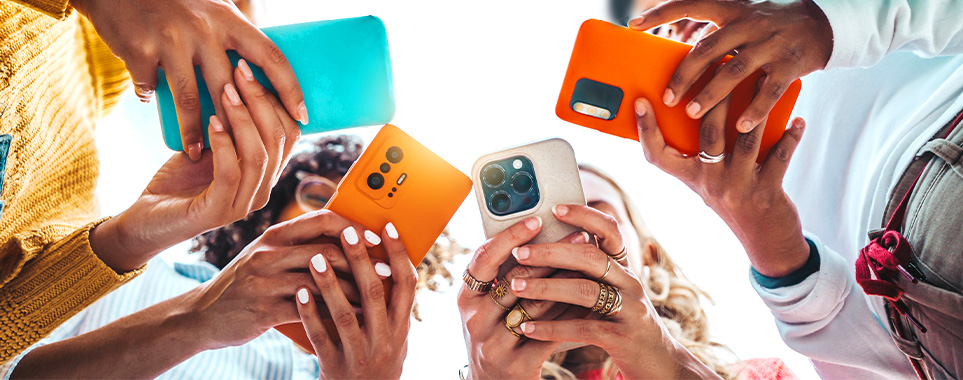
8. Mobile-First Loyalty
Mobile devices have become an integral part of our lives. By optimizing loyalty programs for mobile, businesses can reach customers on-the-go and provide quick and easy access to rewards and benefits.
9. Premium Loyalty Programs
Premium loyalty programs offer exclusive perks and benefits for a fee. This model can generate additional revenue and foster deeper relationships with high-value customers.
10. Generation-Based Offers
Tailoring rewards and offers to specific age groups can increase engagement and loyalty. By understanding the preferences and behaviors of different generations, businesses can create personalized experiences that resonate.
By embracing these trends, businesses can build stronger customer relationships, increase loyalty, and drive long-term growth.
Choosing the Right Loyalty Program for Your Business
When choosing the right loyalty program, several factors should be considered:
1. Business Size and Industry
- Small Businesses: Simple, traditional programs like punch cards or tiered rewards can be effective for smaller businesses with limited resources.
- Large Enterprises: Complex digital programs with advanced features, such as personalized rewards and gamification, can be beneficial for larger businesses with a broader customer base.

2. Target Audience and Demographics
- Tech-Savvy Customers: Digital programs with mobile app integration and personalized offers can appeal to tech-savvy customers.
- Traditional Customers: A mix of traditional and digital elements can cater to a wider range of customers, including those who prefer physical rewards.
3. Budget and Resources
- Limited Budget: Consider cost-effective options like simple point-based programs or partnerships with loyalty platform providers.
- Larger Budget: Invest in sophisticated digital programs with advanced features, such as AI-powered personalization and gamification.
Wondering how to successfully run a loyalty program business?
Read: Measuring Success: Key KPIs for Loyalty Programs
Measuring Success: Key KPIs for Loyalty Programs
To effectively measure the success of your loyalty program, it’s crucial to track relevant key performance indicators (KPIs). Here’s a deeper dive into some essential metrics:
1. Core Metrics
- Customer Retention Rate: This measures the percentage of customers who continue to engage with your brand over a specific period.
- Customer Lifetime Value (CLTV): This metric calculates the total revenue a customer generates throughout their relationship with your business.
- Redemption Rate: This tracks the percentage of loyalty points or rewards that are redeemed by customers.
- Program ROI: This measures the return on investment for your loyalty program, considering costs and revenue generated.
2. Additional Metrics for Deeper Insights
- Purchase Frequency: This tracks how often customers make purchases.
- Average Order Value (AOV): This measures the average amount spent per transaction.
- Customer Acquisition Cost (CAC): This calculates the cost of acquiring a new customer through the loyalty program.
- Customer Satisfaction: This can be measured through surveys, feedback forms, or social media sentiment analysis.
- Engagement Rate: This tracks how often customers interact with your loyalty program, such as checking points, redeeming rewards, or sharing on social media.
3. Leveraging Digital Loyalty Programs for Customer Preferences
Digital loyalty programs offer a wealth of data that can be analyzed to gain deeper insights into customer behavior and preferences. Here are some specific metrics to consider:
- App Usage: Track metrics like app downloads, active users, and session duration.
- Push Notification Engagement: Measure open rates, click-through rates, and conversion rates for push notifications.
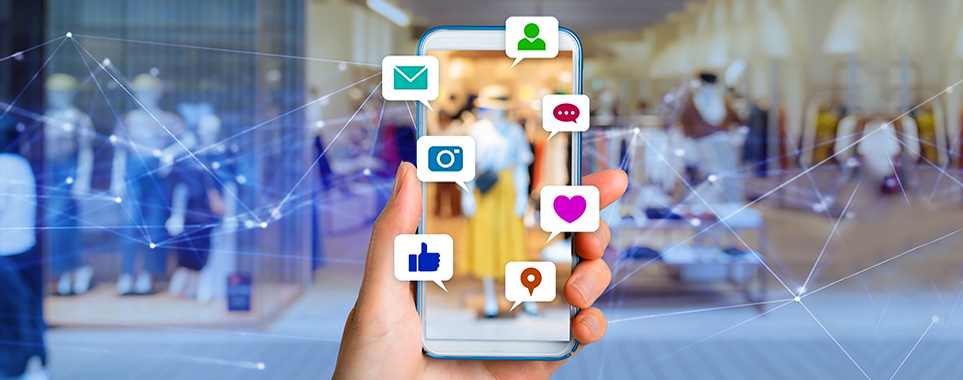
- Social Media Sharing: Monitor how often customers share your loyalty program on social media.
- Email Marketing Effectiveness: Track email open rates, click-through rates, and conversion rates.
By tracking these metrics, you can gain valuable insights into the effectiveness of your loyalty program and make data-driven decisions to improve customer satisfaction, retention, and revenue.
Transitioning from Traditional to Digital Loyalty Programs: A Smooth Journey
Transitioning from a traditional loyalty program to a digital one can be a complex process. Here’s a detailed guide to help you navigate the transition smoothly:
1. Plan Your Strategy
- Define Your Goals: Clearly outline the objectives of your digital loyalty program, such as increasing customer retention, boosting sales, or enhancing brand loyalty.
- Choose the Right Technology: Select a robust loyalty platform that aligns with your business needs and offers features like mobile app integration, personalized rewards, and data analytics.
- Create a Communication Plan: Develop a communication strategy to inform your customers about the transition and the benefits of the new digital program.
2. Communicate Effectively
- Inform Customers: Send clear and concise communication to your existing customers, explaining the benefits of the new digital program.
- Highlight Advantages: Emphasize the advantages of the digital program, such as personalized rewards, exclusive offers, and easy access through mobile devices.
- Address Concerns: Be prepared to address any concerns or questions from customers regarding the transition.
Tip
Learn the BEST ways to improve your engagement with customers: Read now >
3. Offer Incentives
- Welcome Bonus: Offer a special welcome bonus to incentivize customers to sign up for the digital program.
- Exclusive Rewards: Provide exclusive rewards and offers to digital members.
- Tiered Rewards: Implement a tiered reward system to motivate customers to engage more with the program.
4. Provide Exceptional Customer Support
- Dedicated Support Team: Assign a dedicated support team to assist customers with any questions or issues.
- Multiple Channels: Offer support through various channels, such as phone, email, and live chat.
- Clear Instructions: Provide clear and easy-to-follow instructions on how to use the digital platform.
5. Track and Analyze
- Monitor Key Metrics: Track key performance indicators to measure the success of your digital loyalty program.
- Gather Feedback: Use surveys, feedback forms, and social media to gather customer feedback.
- Iterate and Improve: Continuously analyze data and adjust optimize your program.
By following these steps and carefully considering the needs of your customers, you can successfully transition to a digital loyalty program that drives customer engagement, loyalty, and revenue.
Conclusion
Both traditional and digital loyalty programs offer unique advantages and disadvantages. Traditional programs are simple to implement but lack the flexibility and data-driven insights of digital programs. Digital programs, on the other hand, offer greater personalization, scalability, and data-driven decision-making, but they can be more complex and costly to implement. By carefully selecting a reliable loyalty platform provider like Loyal-n-Save, businesses can mitigate the challenges associated with digital loyalty programs. Our platform offers robust security measures, seamless user experiences, and expert support to ensure the success of your loyalty program.
Ultimately, the best loyalty program for your business depends on your specific goals, target audience, and budget. By carefully considering these factors, you can choose a program that drives customer loyalty and enhances your bottom line.
Ready to elevate your customer loyalty strategy? Loyal-n-Save offers a comprehensive and cost-effective solution to help you create a successful loyalty program. Contact us today to learn more about how we can help you attract, retain, and engage your customers.
Posted on Dec 26, 2024



